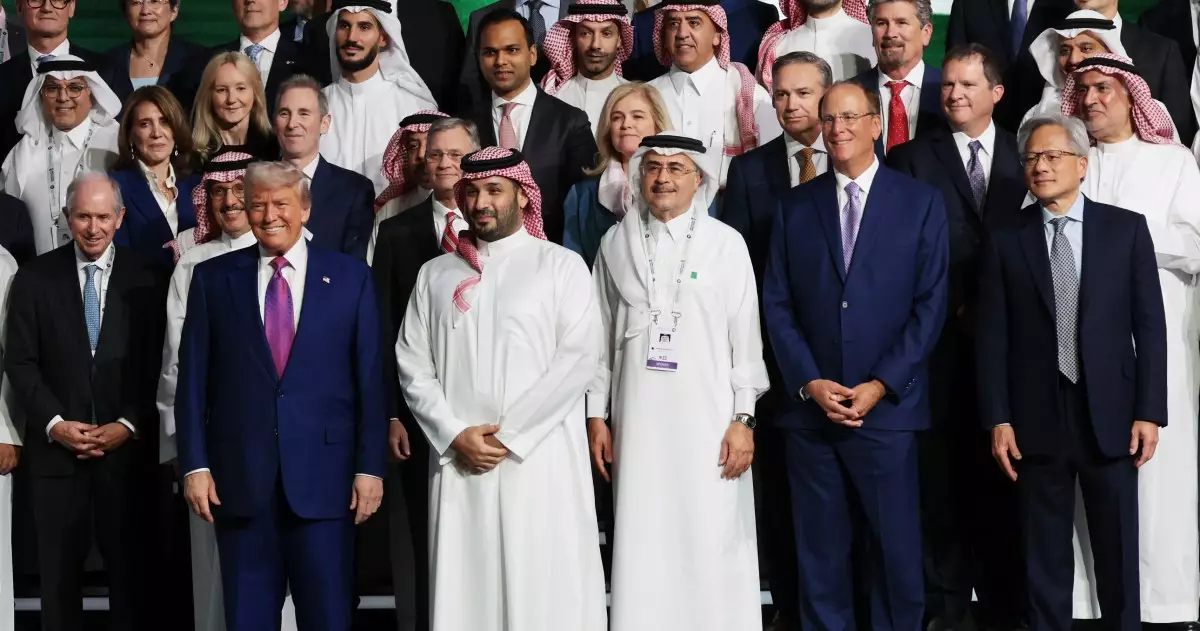In an unpredictable landscape shaped by international politics and technological innovation, Nvidia has emerged as a dominant force in the AI chip market. However, the journey hasn’t been without obstacles. Recently, the US Department of Commerce (DOC) announced the revocation of the Artificial Intelligence Diffusion Rule, which had aimed to limit the export of US-made AI chips. This policy shift is significant, as it denotes the U.S. government’s newfound support for Nvidia’s interests, reflecting an evolving stance under the current administration that appears more favorable to industry giants.
The original intent behind the Diffusion Rule was ostensibly to prevent adversarial nations, such as Russia and China, from gaining access to advanced AI technologies. Yet, in practice, it threatened to limit American companies—especially Nvidia, which controls an estimated 90% of the AI chip market—by imposing excessive regulatory burdens. The timing of this regulatory rollback is crucial; with Nvidia poised to lead in a rapidly growing sector, removing such barriers allows the company to reclaim its competitive edge not only domestically but also in international markets.
A Political Chess Game
The intersection of tech and politics is a fascinating dynamic to observe, especially when it involves figures like Nvidia CEO Jensen Huang and former President Donald Trump. Huang’s recent engagement with Trump at a Saudi investment summit highlights an essential tactical approach by Nvidia: aligning with political figures to secure favorable business conditions. During this summit, where global business leaders gathered, Trump was clear in his agenda—he was seeking investment that would uplift the American tech landscape. This kind of strategic alliance showcases a calculated move by Nvidia to ensure its technological advancements remain unchallenged and bolstered by government support.
Moreover, it’s impossible to ignore how Nvidia’s earlier criticisms of the Diffusion Rule demonstrate a careful balancing act. While Huang criticized the rule as misguided, his engagement with Trump indicates an adept navigation of political waters. Instead of outright condemnation, Nvidia seems to be playing the long game, leveraging relationships to strengthen its market position.
The Huawei Factor
Another pivotal aspect in the unfolding narrative surrounding Nvidia is the intense scrutiny of Huawei. The DOC has issued stern warnings against using Huawei’s Ascend AI chipsets, considering them significant competitors to Nvidia’s technology. This effectively cements Nvidia’s position by stifling alternative advancements that could challenge its dominance. By focusing regulatory pressures on Huawei, the U.S. government is acting as an ally for Nvidia, indirectly aiding the company in maintaining its leadership while also staving off competition from emerging global players.
The confrontation with Huawei is not merely a corporate rivalry; it symbolizes broader geopolitical tensions. The U.S. is clearly drawing lines in the sand for technological supremacy, and by pushing back against Huawei’s expansion in AI, it hints at a desire to consolidate leadership in the AI sector under American innovation.
Future Implications: Leadership in AI Development
As Nvidia stands armed with newly lifted export limitations, its potential for continued innovation and expansion seems almost limitless. The tech landscape is rapidly changing, and the demand for advanced AI solutions is only set to grow. With the federal government showing willingness to assist Nvidia in its pursuit of market expansion, the company is positioned not just to maintain its current status but to potentially dictate the future course of AI development and applications domestically and globally.
The DOC’s announcement signals a broader acknowledgment that overregulation could stifle innovation at a time when aggressive competition is crucial. Nvidia stands to benefit immensely, capitalizing on its stronghold in the AI market while vigilantly eyeing the global horizon for emerging competitors. This strategic landscape is not merely about chips; it encompasses economic interests, national security concerns, and global technological leadership.
In this charged atmosphere, Nvidia’s path is illuminated not just by technological capability but also by adept navigation of political currents, regulatory landscapes, and competitive strategies. The stakes are high, and the company’s actions today will undoubtedly shape the contours of the AI industry tomorrow.

